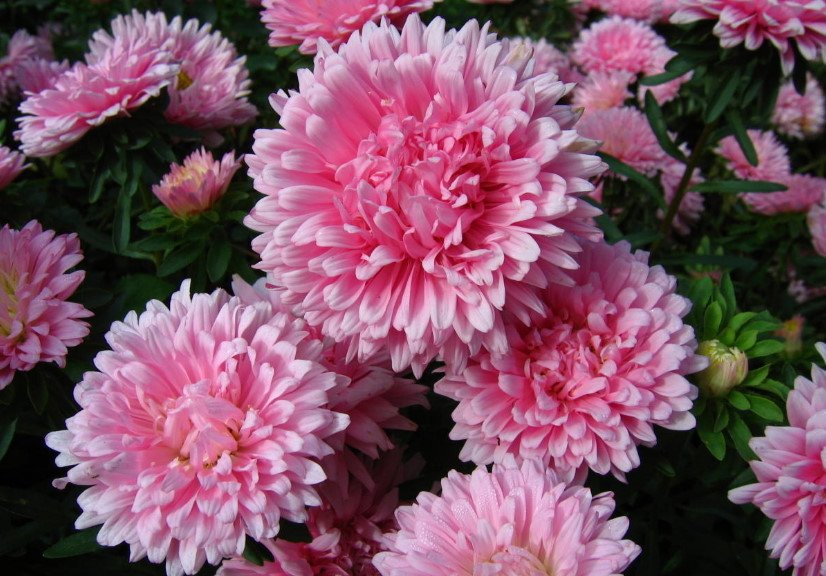
- Callistephus chinensis;
- What Callistephus chinensis likes;
- What Callistephus chinensis doesn’t like;
- The placement of Callistephus chinensis in the country;
- Ageratum houstonianum cultivars;
- What Ageratum likes;
- What Ageratum doesn’t like;
- The placement of Ageratum in the country;
- Brachyscome iberidifolia syn. Brachyscome iberidifolia ;
- What Brachyscome likes;
- What Brachyscome doesn’t like;
- The placement of Brachyscome in the country;
- Gladiolus x hybridus;
- What Gladiolus likes ;
- What Gladiolus doesn’t like ;
- The placement of Gladiolus in the country ;
August is not just asters. Some are now luxuriously blooming petunias, some-chicory, perennial flax. And how many beautiful plants are now happy with the flowering of all users of the site! Hundreds, thousands, and among them-roses, clematis, cannas…
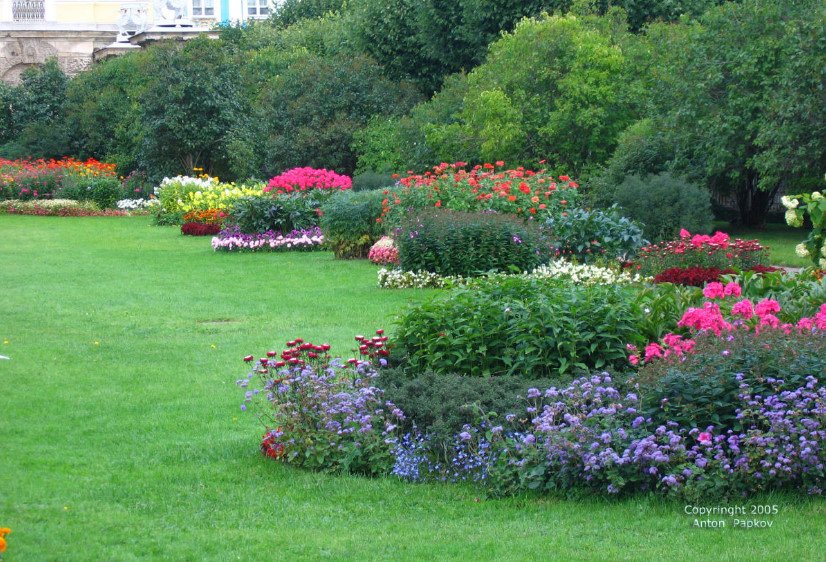
Cottages favorites August is traditionally considered to be:
- Gaillardia;
- Rudbeckia;
- Echinacea;
- Dahlia annual and perennial;
- annual Chrysanthemums;
- Zinnias;
- Gladioluses;
- Astras;
- Monarda
- Cornflowers;
- Phlox paniculata;
- Sedums;
- Calendula and others.
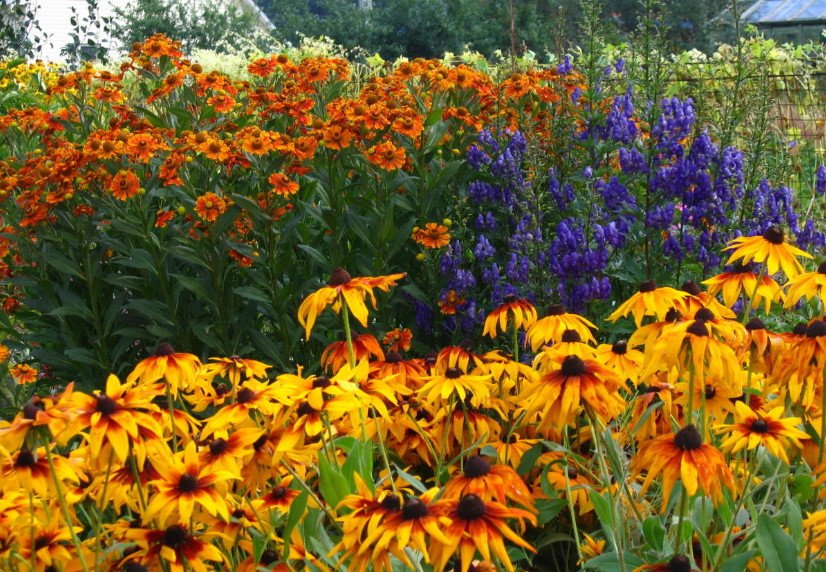
Luxurious floral perennials and annuals are echoed by fragrant herbs. The air in the country as if infused with honey, fragrant resins, musk, amber, vanilla, citrus and something else pleasant. The days are noticeably decreasing, the nights have become really dark, filled with aromas of Matthiola, Mirabilis, Nicotiana suaveolens…
Choose from all the splendor of the top 10 flower was very difficult: do not judge me for subjectivity, and meet them — flowering plants sultry August!
Callistephus chinensis
Callistephus chinensis reigns in August cottages. Most often grown varieties and cartoneria, which are known to all as true asters, but in fact they belong to the genus, callistephus.
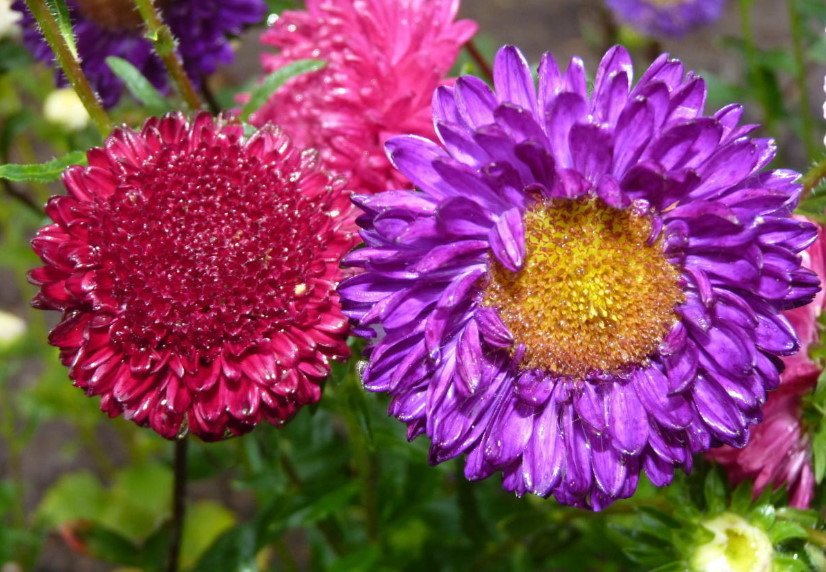
This annual plants from the family Asteraceae height of 20-60 cm and a width of 25-45 cm leaves ovoid Or ovate-triangular, coarsely toothed, up to 8 cm Inflorescences-chrysanthemum-shaped baskets (there are needle, pompom varieties) with a diameter of 9-12 cm, simple and Terry, white, cream, purple, red, crimson, pink, purple colors; bloom from late summer to serious autumn frosts.
What Callistephus chinensis likes
- dry air;
- solar location;
- non-acidic fertile soils;
- new places (planted from year to year on the same place, Astra will suffer from fungal diseases);
- fertilizing with complete mineral fertilizer.
What Callistephus chinensis doesn’t like
- sour soil;
- fresh manure;
- drought;
- excess moisture.
The placement of Callistephus chinensis in the country
Undersized (5-20 cm) asters are good in borders, in containers and in the foreground of flower beds of landscape style.
More tall varieties in the compositions have away. They are suitable for single (or rather small groups) landings on the background of the lawn. Astra well planted between faded and retired daffodils and other bulbous, not in need of annual digging. Thus Islands of asters will fill your dacha in different places with bright colors of the last month of summer.

4 facts about Callistephus chinensis, which you might not know:
- Chinese Aster appeared in Europe not so long ago — in 30 years of the XVIII century, thanks to the French missionary Pierre Interview, which is named in honor one of the most beautiful flowers in the garden — incarvillea. Latin name Callistephus means of a beautiful wreath;
- at the annual Callistephus the full palette of colors (not just orange);
- recently, very popular asters with simple inflorescences;
- Chinese asters can be transplanted with buds. Tolerate transplanting well, especially low-growing varieties.
Ageratum houstonianum cultivars
Ageratum houstonianum cultivars — is also a member of the family Asteraceae. In culture, mostly undersized (height and width 15-30 cm) varieties of this “cold” annual.
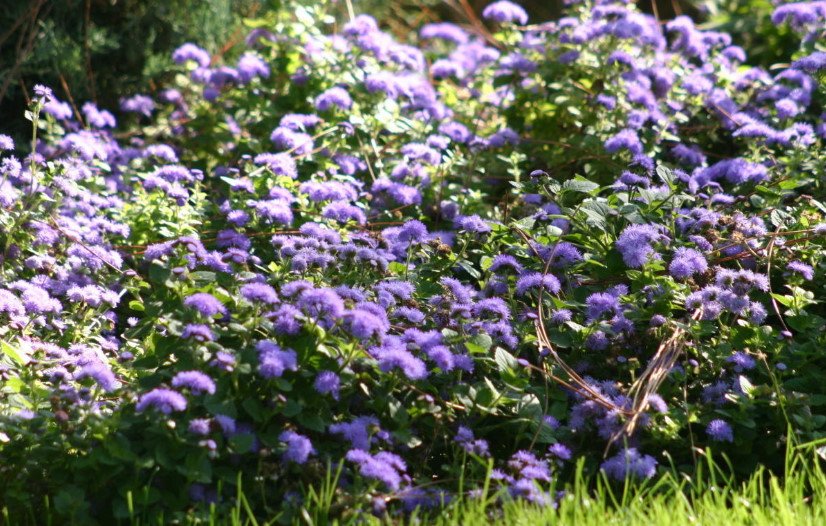
The leaves are oval, with a length of 5-7 cm Inflorescence — small baskets with a diameter of 5-10 cm., white, pink, blue, light blue, purple; raised to 40 pieces in rounded panicles; blooming until late autumn frosts.
What Ageratum likes
- light;
- loose fertile soils;
- heat (any spring frosts are dangerous, but flowering specimens withstand autumn cold with low positive temperature);
- fertilizing with complete mineral fertilizer.
What Ageratum doesn’t like
- cold;
- hunger.
The placement of Ageratum in the country
It is interesting in the foreground of flower beds; it can be planted near the pond; good in containers and pots for decoration of outdoor terraces; dwarf varieties are harmonious with the stones in the rockeries.
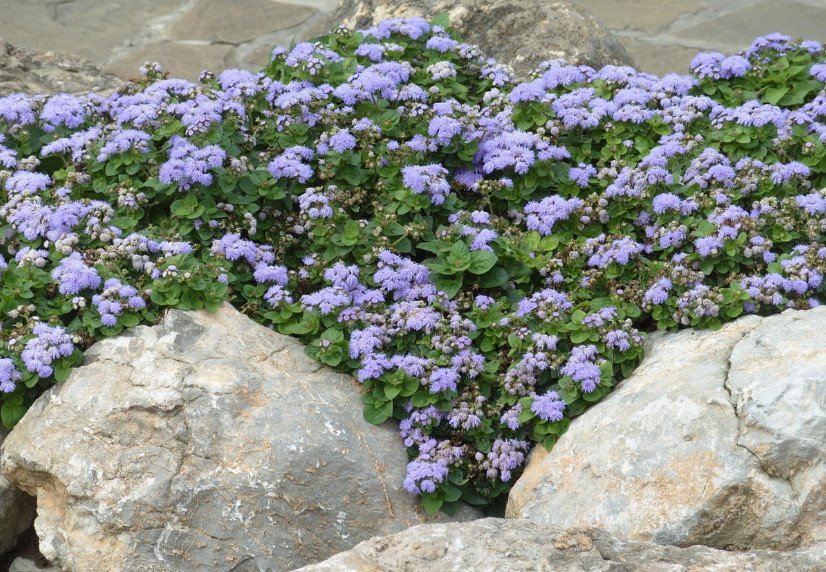
2 interesting facts about ageratum that you might not know:
- translated from the Latin name of the plant is translated as not old;
- in warm winters it can over-winter also.
Brachyscome iberidifolia syn. Brachyscome iberidifolia
Brachyscome iberidifolia syn. Brachyscome iberidifolia is a showy annual from the Asteraceae family native to Western and South Australia.

Up to 45 cm and a width of 35 cm leaves feathery, gently pubescent, up to 14 cm Inflorescence-fragrant baskets, up to 4 cm in diameter, bloom until late autumn frosts. In the culture class and variety series with blue, purple, white, violet-pink, pink flowers with white, yellow or dark purple centre.
What Brachyscome likes
- bright location;
- light soils;
- watering only in dry hot summer, when drying the top soil layer;
- fertilizing with complete mineral fertilizer every 2 weeks.
What Brachyscome doesn’t like
- heavy soil;
- overwetting.
The placement of Brachyscome in the country
It is spectacular in the flower beds of landscape style. Light and airy Brachyscome can “lighten” any composition. Good in groups, on discounts, in borders, containers and pots.
- An interesting fact about Brachyscome, which you might not know:
the name Brachyscome from Latin translates as a short tuft, which is associated with the pubescence of the seeds of the plant.
Gladiolus x hybridus
At the August flower-beds, among the variety of flowering perennials and annuals, Gladiolus x hybridus always stands out.
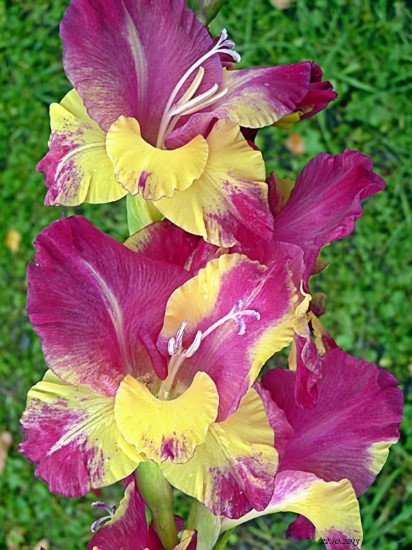
It is an imposing tall tuberous perennial with beautiful linear leaves and a large peduncle. Exquisite flowers, reminiscent of orchids, a variety of colors, bloom in September. Over the past 10-15 years, the assortment of gladioli has been significantly updated, the varieties of green, yellow, purple, smoky color have become very popular.
What Gladiolus likes
- Sunny location;
- moist loamy or sandy loam fertile soil of neutral reaction;
- fertilizing until the end of August with organic and mineral fertilizers in turn, every 15-20
- days after planting;
- regular watering;
- garter peduncles.
What Gladiolus doesn’t like
- cold (does not winter in the open ground).
The placement of Gladiolus in the country
It is so self-sufficient that it is difficult to combine it in a mixborder with other colors. As a result of selection there were many varieties of undersized and small-flowered gladiolus, which are harmonious in landscape flower beds.
Another 2 gladiolus, which you might not know:
In addition to Gladiolus x hybridus, in August bloom smaller flowers Gladiolus imbricatus-elegant gladiolus, different from its cultural counterpart pristine exquisite beauty. It will perfectly cope with the role of exotic decoration of the reservoir, located in the coastal wet zone. Would be out of place on the ridges, a group in front of the shrubs. Decorative not only in the flowering period, when it supports the purple range, but throughout the growing season, thanks to the beautiful narrow leaves directed upwards.
August afternoon the intoxicating aroma spread all round the flowers of Acidanthera bicolor. It does not tolerate cold and too wet soil, feels more comfortable in a pot on the terrace.

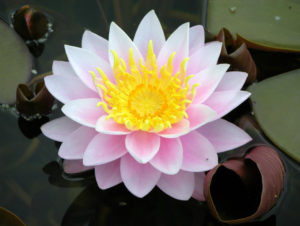
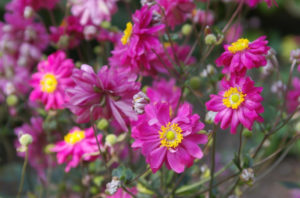
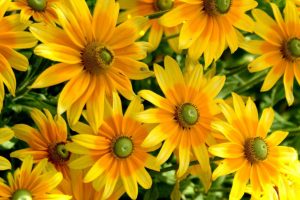
Leave a Reply